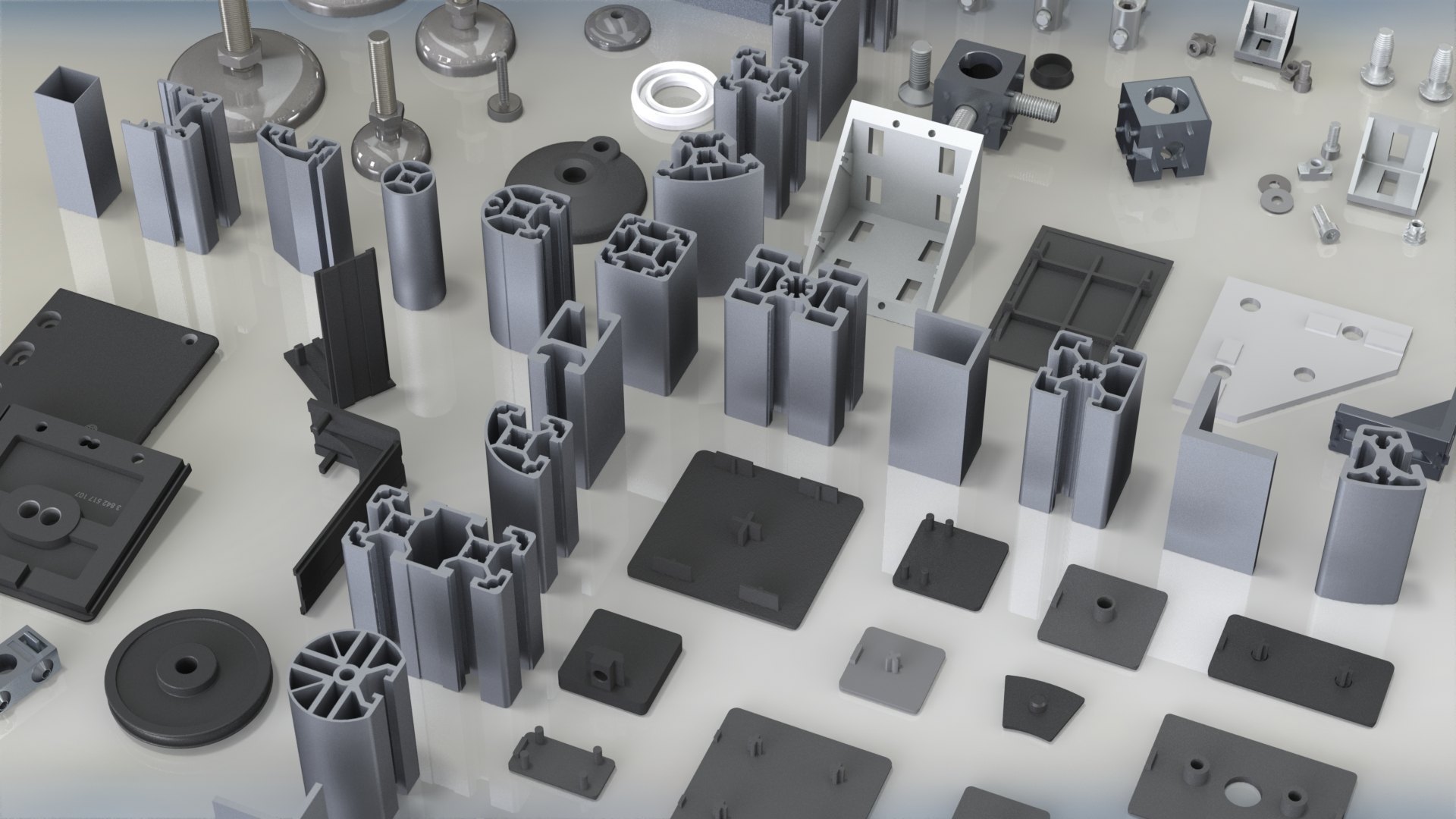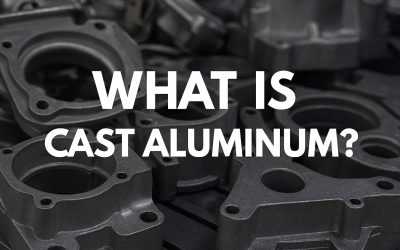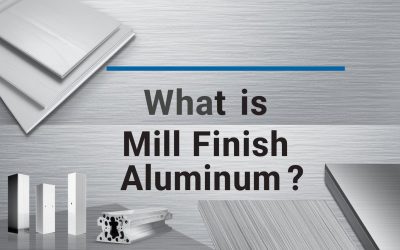Kovový hliník má velmi všestranné použití a lze jej snadno nalézt ve výrobcích pro domácnost, jako je nábytek, automobily, budovy, letecký průmysl atd. Eloxovaný hliník je specificky ceněný typ hliníku, protože je velmi užitečný díky své trvanlivosti, odolnosti proti korozi a stylovému vzhledu. Nicméně v určitém okamžiku čistý vzhled eloxovaného hliníku nevyhovuje specifikacím designu nebo vkusu povrchové úpravy daného projektu. Z této skutečnosti vyplývá otázka, zda lze eloxovaný hliník lakovat. Odpověď zní ano, nicméně k dosažení dlouhodobého efektu je zapotřebí určitého postupu.
V tomto podrobném návodu se dozvíme vše potřebné, pokud jde o lakování eloxovaného hliníku, přípravné práce, jaké materiály použít a techniky, které nám zaručí dobrý a trvalý povrch.
Co je eloxovaný hliník?
Než se pustíte do natírání eloxovaného hliníku, je důležité vědět, co je to eloxovaný hliník. Při eloxování se na povrch hliníku nanáší přírodní vrstva oxidu, která zvyšuje jeho tloušťku. To dodává kovu pevnost, zajišťuje odolnost proti korozi a poskytuje příznivý výsledek pro venkovní nebo náročné použití. Eloxovaný povrch je tvrdší než obyčejný hliník a obsahuje také mikroskopické póry, které mu dávají schopnost absorbovat barviva a odolávat běžným nátěrům.
Díky tomu, že eloxovaný hliník dlouho vydrží, je náchylný k lakování. Běžné barvy se pravděpodobně odlupují nebo odlupují, protože se nemohou spojit s hladkým eloxovaným povrchem. To je jeden z důvodů, proč existuje eloxovaný hliníkový typ barvy nebo eloxované hliníkové barvy ve spreji, které při správném použití vyžadují zvýšenou přilnavost a dlouhou životnost.
Důvod, proč lidé používají eloxovaný hliník k malování
Ačkoli se zdá být obzvláště hezký v přirozeně se vyskytujícím kovovém lesku, lidé se často rozhodnou eloxovaný hliník natřít z některých důvodů:
- Estetická krása: Designéři a majitelé domů mohou mít zájem o změnu barvy, aby lépe ladila s interiérem, exteriérem nebo potřebami značky.
- Restaurování: Dříve eloxované a tvrzené hliníkové díly mohou být drsné, vybledlé, skvrnité nebo se značkami, takže přelakování dodá dílu nový, lesklý vzhled.
- Přizpůsobení: Eloxované povrchové úpravy nemohou poskytnout potřebnou barvu průmyslovým zařízením, vozidlům a dekorativním předmětům.
- Ochrana: Použití nátěru zajistí dodatečné krytí, které zvýší bezpečnost hliníku proti nepříznivým povětrnostním podmínkám.
V obou těchto případech je účelem lakování eloxovaného hliníku nejen vylepšení jeho vzhledu, ale také způsob, jak zvýšit životnost a užitečnost výrobku.
Seznam materiálů a nástrojů
Při lakování eloxovaného hliníku je nutné použít materiály i vybavení, aby bylo dosaženo kvalitní a odolné povrchové úpravy. Správná volba zaručí dobrý průběh aplikace a dlouhou životnost výsledků.
Materiály
- Čisticí prostředky: Jemným mýdlem, vodou nebo odmašťovacím prostředkem očistěte povrch od nečistot, olejů a všech nečistot.
- Smirkový papír (zrnitost 400600): Jemně odřete eloxovaný povrch, aby základní nátěr lépe držel.
- Maskovací pásky a fólie: K zakrytí povrchů, které není třeba natírat.
- Primer: Samoleptací základní nátěr nebo spíše základní nátěr na lepení kovů, který se používá na hliník.
- Barva: Speciální barva na eloxovaný hliník, dodává se ve formě štětce nebo spreje.
- Bezbarvý lak/těsnicí hmota: Abyste zabránili následujícímu: UV záření, poškrábání a vlhkosti.
Nástroje
- Brusný blok nebo brusný pad: To může pomoci udržet tlak při broušení spravedlivý.
- Tkanina nebo plastová fólie: Tímto způsobem zakryjete pracovní plochu, aby nedošlo k přestříkání nebo odkapání kapalin.
- Stříkací pistole (volitelně): Pro rovnoměrné lakování velkých projektů v případě, že nepoužíváte stříkací barvu v aerosolech.
- Kartáče/válce: jemná práce/malá plocha.
- Osobní ochranné prostředky: Rukavice, ochranné brýle a masku, aby se zabránilo kontaktu s nadměrným množstvím prachu a výparů.
Připravené nářadí a materiály pro lakování vám urychlí práci a také pomohou, aby váš projekt z eloxovaného hliníku vypadal skutečně dobře a měl profesionální, leštěný povrch.
Druhy barev
Akrylová barva
Akrylová barva je lehká, rychle schne a snadno se s ní pracuje. Je velmi účinná při práci v interiéru a při dekorativních vrchních nátěrech eloxovaného hliníku. Bez vrchního nátěru však neodolá většímu působení ve venkovním prostředí.
Epoxidová barva
Epoxidový nátěr je extrémně pevný a chemicky odolnější vůči teplu a vlhkosti. Skvěle se hodí, pokud jde o venkovní nebo průmyslové komponenty a bezpečnost a pevnost jsou nezbytností. Nevýhodou je, že může být náročnější na realizaci a musí se podle toho plánovat.
Smaltovaná barva
Smaltovaná barva má dlouhotrvající, atraktivní, lesklý a hladký povrch. Ve srovnání s akrylovými barvami nebledne a je odolná proti poškrábání. Nicméně nezasychá tak rychle a může vyžadovat několik vrstev, aby co nejlépe kryla.
Barva ve spreji na kov
Barvy ve spreji na kov jsou užitečné na velké nebo nestejnorodé povrchy, protože je lze natírat pomocí speciálně upravených sprejů. Poskytují hladký nátěr s minimálním úsilím při stříkání, ale proti přestřikům je vhodnější maskování. Díky tomu, že rychleji zasychají, jsou tyto barvy také nejlepší volbou v případě, že se jedná o spěšný projekt.
Jaké barvy použít na eloxovaný hliník?
Pro eloxování hliníku jsou nejvhodnější barvy, které mají přilnout k tvrdým, neporézním a kluzkým povrchům. Běžné barvy na stěny nebo dřevo nemusí jít správně nanést; proto je důležitý správný typ:
1. Epoxidové barvy
Epoxidové barvy by měly být první na seznamu eloxovaného hliníku. Nabízejí dobrou přilnavost, vysokou trvanlivost a odolnost proti chemikáliím, vlhkosti a poškrábání. To je vyzdvihuje jako nejlepší pro použití v exteriéru a na průmyslových předmětech a v drsných oblastech.
2. Uretanové akrylové barvy
Tyto barvy jsou kombinací akrylové pružnosti a uretanové houževnatosti. Uspokojivě přilnou k řádně natřenému eloxovanému hliníku a mohou poskytnout lesklý, odolný povrch. Perfektní dekorativní a ochranné.
3. Smaltové barvy
Smaltové barvy poskytují lesklý, hladký povrch, který je odolný proti vyblednutí a mírnému opotřebení. Jsou nejvhodnější pro interiéry, svítidla, nábytek a okrasné projekty, kde záleží na vzhledu.
4. Speciální barvy na kov ve spreji
Některé značky vyrábějí speciální barvy ve spreji, které lze použít na hliník a jiné kovy. Jsou nepřilnavé, rovnoměrně sedí a rychle schnou. Snadno se používají pro samoopravné činnosti na malé ploše.
Profesionální tip: Při lakování nezapomeňte použít základní nátěr. Díky němu barva pevně přilne k eloxovanému hliníku, takže se neodlupuje ani neodlupuje.
Proces malování eloxovaného hliníku
1. Mytí povrchu
Čištěním začíná proces lakování eloxovaného hliníku. Pomocí teplé vody a jemného čisticího prostředku zbavte povrch mastnoty, otisků prstů. A na houževnaté olejové skvrny použijte odmašťovač, abyste je zcela rozbili. Pořádně omyjte v čisté vodě a nechte kov zcela vyschnout. Čistý povrch pomáhá vyrovnat barvu, aby dobře přilnula, a také déle vydrží.
2. Broušení/leptání
Eloxovaný hliník je příliš hladký, takže je nutné broušení nebo leptání. Přilnavost barvy zvýšíte jemným smirkovým papírem a povrch trochu zdrsníte, abyste dosáhli několika škrábanců. Lepších výsledků lze dosáhnout také použitím chemického leptání při průmyslových pracích. Pokud se toto neprovede, může se i nejkvalitnější "eloxovaný hliníkový lak" začít během krátké doby odlupovat.
3. Nanesení základního nátěru
Po broušení by se měl nanést samoleptací nátěr. Tento základní nátěr je speciální a dobře přilne ke kovovému povrchu, aby vytvořil dobrý podkladový nátěr. Vrstvu udržujte hladkou a počkejte, dokud zcela nezaschne, než přejdete k dalšímu kroku. Vynechání základního nátěru sníží životnost a ztíží držení barvy na hliníku.
4. Povrchová úprava
Nyní přichází na řadu malování. Barvu nanášenou štětcem lze použít na malé plochy nebo pro tzv. hladké a rovnoměrné pokrytí pomocí eloxované hliníkové barvy ve spreji. Při nanášení barvy štětcem ji nanášejte v tenké vrstvě a zajistěte, aby každá vrstva zaschla před nanesením další, abyste dosáhli požadovaného efektu. Typická pevná povrchová úprava, která má dobře fungovat, aniž by se snadno odlupovala, obvykle vyžaduje dvě až tři vrstvy.
5. Tmelení vrchního nátěru
Po dokončení lakování nastříkejte bezbarvý ochranný nátěr. Tato vrstva slouží jako ochrana proti poškrábání, vlhkosti a slunci. Slouží také k zachování lesku a barvy eloxovaného hliníkového nátěru, což zajišťuje delší životnost povrchové úpravy.
6. Sušení a vytvrzování
Nakonec počkejte, natřete hliník křídou a nechte jej během 24-48 hodin zaschnout a vytvrdnout. Tuto dobu dodržujte mimo používání nebo dotyk s předmětem. Po úplném vytvrzení získá váš projekt eloxovaného hliníku, na kterém pracujete, z lakování eloxovaného hliníku, dlouhotrvající a dobře vypadající povrch.
Techniky lakování eloxovaného hliníku
1. Malování štětcem
Pravděpodobně nejpřímější technikou je aplikace štětce s eloxovanou hliníkovou barvou. Tato technika poskytuje větší kontrolu a lze ji aplikovat na malé díly nebo detailnější plochy. Pokud však není aplikována opatrně, může způsobit stopy po štětci. Nejhezčího povrchu dosáhnete několika velmi tenkými vrstvami.
2. Malování stříkáním
Nejrozšířenější je použití tzv. eloxované hliníkové barvy ve spreji, která rovnoměrně pokrývá plochy a působí profesionálně. Je účinný na plochách větších rozměrů, např. na rámech, panelech nebo nábytku. Lakování stříkáním také vyžaduje správné větrání a ruka se během procesu nikdy netřese, aby nedocházelo k příliš silným kapkám nebo vrstvám.
3. Práškové lakování
Pokročilý proces: práškové lakování. Suchá (prášková) aplikace je založena na elektrostatickém nanášení práškové barvy a tepelné úpravě. Vzniká tak tvrdá, dlouhotrvající ochrana, pokud je použité večerní opotřebení silnější a odolnější než tekutá barva. Tato aplikace je použitelná především v průmyslu, přesto vyžaduje speciální přístroje.
4. Elektrostatické malování
Malování touto technikou se provádí pomocí elektricky nabitého typu barvy, která se stříká na eloxovaný povrch, kde se částice přitahují. Podobně jako práškové lakování se hojně používá ve velkém měřítku v továrnách, protože poskytuje rovnoměrný a trvanlivý povlak.
5. Namáčení
Proces ponoření spočívá v tom, že se eloxovaný hliníkový odlitek ponoří do nádoby naplněné tekutou barvou. Ta pokryje všechny plochy, včetně obtížně přístupných oblastí. Tato technika se v domácnostech nepoužívá tak často, ale je výhodná pro drobné předměty ve velkém.
Jaký typ barvy používáte na eloxovaný hliník?
V případě eloxovaného hliníku ne všechny barvy dostatečně přilnou, protože je hladký a odolný proti korozi. Nejvhodnější je barva, která byla vyrobena speciálně pro tyto kovy. Pro zajištění dobrého spojení je třeba nejprve nanést jakýkoli základní nátěr, a to i samoleptací. Po nanesení základního nátěru je možné použít barvy na bázi akrylu, smaltu nebo epoxidu, které se specializují na hliník.
V případě, že chcete rychlejší, je eloxovaná barva na hliník ve spreji účinná, když potřebujete rovnoměrně pokrýt díly, které jsou zakřivené nebo strukturované. Pro přesnou práci doporučujeme eloxovanou barvu na hliník nanášet štětcem. Doporučujeme: Bez ohledu na typ použité barvy lze přidat bezbarvý ochranný vrchní nátěr, který zvýší odolnost a zabrání poškrábání, vyblednutí nebo vlhkosti.
Stručně řečeno, je důležité si uvědomit, že vždy, když používáte barvy, měli byste místo běžných barev pro domácnost používat barvy na kov, protože jsou navrženy tak, aby držely na eloxovaných površích, a tím vám poskytly dlouhotrvající malířské práce.
Jak malovat eloxovaný hliník - průvodce krok za krokem
Když máte pocit, že je příprava hotová, zde je základní, ale účinný postup krok za krokem, jak získat to nejlepší při použití eloxovaného hliníku při lakování eloxovaného hliníku.
1. Maskování
Před nanesením jakéhokoli přípravku zakryjte místa, která nemají být natřena barvou, malířskou páskou. To je nutné zejména v případě okenních rámů, klik nebo strojů, u nichž by některá část neměla být natřena. Správné maskování nejenže udržuje projekt v dobrém stavu, ale také šetří čas při úklidu.
2. Priming
Poté naneste vrstvu samoleptacího základního nátěru. Tento základní nátěr zajistí, že se na kovový povrch specificky přichytí a pomůže barvě přilnout. Počkejte, až základní nátěr zcela zaschne. Tato fáze vyžaduje přípravu, kdy uspěchání této části bude mít za následek odlupování nebo nerovnoměrnou povrchovou úpravu. Celkově bývá u větších projektů vhodnější použít základní nátěr ve spreji, ale menší objekty lze trpělivě natírat štětcem.
3. Malování
Nechte základní nátěr zaschnout a poté jej natřete buď vámi preferovanou, nebo zvolenou barvou. Je možné použít buď eloxovanou hliníkovou barvu ve formě štětce, nebo lze větší prostory pokrýt pomocí eloxované hliníkové barvy ve spreji. Barva ve spreji bude zpravidla hladší a bude méně šmouhat, ale malování štětcem bude zpravidla poskytovat větší kontrolu nad malými, detailními předměty. Rozhodnutí bude vycházet z velikosti vašeho projektu a druhu povrchové úpravy, kterou si přejete.
4. Více vrstev
Namísto jedné silné vrstvy použijte vždy dvě až tři tenčí vrstvy barvy. Touto metodou se vyhnete kapkám, zvýšíte přilnavost a výsledek práce bude vypadat profesionálněji. Každou vrstvu nechte zaschnout a poté naneste další vrstvu. Při tomto kroku buďte trpěliví, aby byl nátěr odolnější.
5. Těsnění
Na závěr uzavřete smaltovanou plochu průhledným vrchním lakem nebo tmelem. Tento nátěr chrání před poškrábáním, UV zářením, vlhkostí a dalším vnějším zneužitím. Přidaný ochranný vrchní nátěr se doporučuje zejména v případě, že má být předmět používán venku nebo tam, kde dochází k častému opotřebení.
Při důkladném dodržení uvedených kroků bude vaše práce na lakování eloxovaného hliníku vypadat leštěně a profesionálně a vydrží mnoho let používání bez vyblednutí a odlupování. Stačí jen správné maskování, trpělivé vrstvení a ochranné utěsnění, aby byl rozdíl mezi průměrnou a dlouhotrvající povrchovou úpravou.
Barva ve spreji vs. barva nanášená štětcem
Volba mezi barvou nanášenou štětcem a barvou ve spreji je jedním z nejdůležitějších rozhodnutí při lakování eloxovaného hliníku. Obě techniky mají své výhody a kritérium výběru bude spočívat ve velikosti projektu, požadované povrchové úpravě a nástrojích, které máte k dispozici.
- Barva ve spreji: Velké nebo zakřivené plochy se obvykle lakují pomocí eloxovaného hliníkového spreje (používá se také eloxovaný hliníkový sprej). Díky němu je vzhled rovnoměrný, hladký a nezanechává stopy po štětci. Ruční malování. Rohy a hrany mohou být problematické i se štětcem, v tomto případě sprej toto vše eliminuje. Další výhodou je, že rychle kryje; proto jej s výhodou využijete u projektů, jako je venkovní nábytek, okenní rámy nebo dekorativní panely. Malování sprejem však vyžaduje dobře větraný prostor a určitou ochranu, aby nedošlo k přestříkání.
- Barva nanášená štětcem: Naopak při nanášení eloxované hliníkové barvy štětcem máte lepší kontrolu nad materiálem, pokud se jedná o menší a detailní plochy. Snižuje množství odpadu a omezuje problémy s přestříkáním. Lakování štětcem může být časově náročné; je to však jistý způsob, jak aplikovat některé retuše nebo v interiéru, které nemusí vyžadovat stříkání. Abyste se vyhnuli stopám po štětci, je třeba používat jemné nanášení tenkých vrstev pomocí prvotřídního štětce.
Posledním bodem je, že volba metody, kterou použijete k lakování eloxovaného hliníku, určuje, zda použijete sprej nebo štětec, v závislosti na typu vašeho projektu. Stříkání je nejvhodnější způsob, když chceme mít dokonalý tovární nátěr, a štětec je nejvhodnější, když potřebujeme specifickou aplikaci. Dokonce i mnoho kutilů se uchyluje ke kombinaci obou přístupů, tj. jak stříkání, tak kartáčování, aby dosáhli profesionálního výsledku.
Tipy/osvědčené postupy
Pokud jde o lakování eloxovaného hliníku, je třeba dodržovat osvědčené postupy, aby bylo dosaženo hladkého, odolného a profesionálně kvalitního nátěru. Jedná se o velmi křehký postup, nicméně při správném postupu by váš projekt měl vydržet opotřebení v průběhu let, aniž by se odlupoval nebo bledl.
- Úplně čistý: Hliníkový povrch byste měli vždy umýt vodou a mýdlem a poté odmašťovacím prostředkem, abyste z něj odstranili veškeré nečistoty, olej nebo látky. Barva ulpívá pouze na čistém povrchu.
- Lehce písek: Lehce přebruste povrch velmi jemným smirkovým papírem (zrnitost asi 400-600), aby se povrch zdrsnil. Toto opatření napomáhá přilnavosti základního nátěru a barvy.
- Používejte špičkové materiály: Připlaťte si za kvalitní eloxovanou hliníkovou barvu nebo eloxovanou hliníkovou barvu ve spreji a základní nátěr a ochranný nátěr. Levný materiál se může rychle odlupovat.
- Používejte tenké vrstvy: V době stříkání nebo štětcem (podle toho, co dělá tlak) je mnohem lepší řada tenkých vrstev než jedna silná. Vyhnete se tak kapkám, nerovnoměrnému krytí a špatné přilnavosti.
- Počkejte na sušení: Počkejte, až jedna vrstva zaschne, a pak začněte nanášet další. Spěchem se může povrchová úprava zničit.
- Vrchní nátěr: Povrch natřete bezbarvým lakem, který utěsní barvu, zvýší trvanlivost a ochrání před opotřebením vlivem počasí.
- Práce v kontrolovaném prostoru: Malujte pokud možno v dobře větraném, bezprašném prostoru, jinak by se na mokrou barvu mohly přichytit částečky.
Použitím těchto tipů spolu s postupem krok za krokem dosáhnete trvalého profesionálního výsledku svého projektu z eloxovaného hliníku.
Použití lakovaného eloxovaného hliníku
Lakovaný eloxovaný hliník má mnoho aplikací, mezi které patří:
- Vylepšení domácnosti: Výroba oken, dveřních klik, kuchyňského kování.
- Automobilový průmysl: Zakázkové díly karoserie, ozdobné lišty a ráfky automobilů.
- Konstrukce: Vývěsní štíty, panely a ozdobné konstrukce.
- Průmyslové: Umístění strojů, nástrojů a zařízení.
- Umělecká intervence: Sochy, nábytek a umělecké instalace.
Eloxovaný hliníkový nátěr je flexibilní a lze jej použít jak ve funkcích, tak v dekoracích.
Péče a výdrž
Po natření eloxovaného hliníku je povrchová úprava díky správné péči atraktivní a dlouhotrvající:
- Omyjte je jemnou vodou a mýdlem; nepoužívejte drsné čisticí prostředky.
- Při opotřebení ochranné vrstvy bezbarvý lak znovu naneste.
- Uchovávejte věci v domě, kde nebudou vystaveny povětrnostní erozi.
- Škrábance lze v krátké době přetřít barvou, aby nedocházelo k jejich odlupování.
Lakovaný eloxovaný hliník vydrží snadno mnoho let s pravidelnými úpravami, nikoliv s kompletním přelakováním.
GC Precision Mould: Proč si vybrat právě nás?
Poslední zastávka se stává zdrojem pýchy díky kvalitním formám, v nichž se snoubí inovace, odolnost a přesné strojírenství společnosti GC Precision Mould. Po mnoha letech strávených v oboru jsme se naučili, že na přesnosti a důslednosti záleží v každém projektu. Náš tým zapojuje složité technologie a kontrolu kvality, abychom zaručili, že každá forma splňuje mezinárodní normy. Spolupracujeme s klienty, abychom jim poskytli řešení na míru v závislosti na jejich individuálních potřebách, a to jak s klienty z automobilového průmyslu, tak s klienty z oblasti zdravotnictví a průmyslu. Díky spolehlivosti, včasným dodávkám a konkurenceschopným cenám, které z nás udělaly důvěryhodného společníka po celém světě, jsme dokázali předstihnout ostatní. Když si vyberete společnost GC Precision Mould, rozhodli jste se správně, když jste si vybrali společnost, která se zavázala poskytovat kvalitu, spokojenost zákazníků a udržitelné obchodní vztahy založené na vzájemné důvěře a výkonnosti.
Závěr
Mohlo by se zdát, že eloxovaný hliník je nejhorší noční můrou malířů, ale pokud se provede správná příprava, použije se správný materiál a metoda, je to jistě možné. Se správným základním nátěrem (ideální směsí by byl vysoce kvalitní eloxovaný hliník & nebo barva ve spreji na eloxovaný hliník), trochou trpělivosti a promyšlenými aplikačními technikami můžete eloxovaným hliníkovým povrchům vtisknout zcela nový povrch, který bude ostrý, dlouhotrvající a profesionální. Domácí dekorace, průmyslové použití nebo přizpůsobení vašeho automobilu, jakmile se naučíte aplikovat odpověď na dotaz, jak natřít eloxovaný hliník, čeká vás svět kreativního využití a praktické funkčnosti.
Nejčastější dotazy
1. Je možné natřít eloxovaný hliník a vyhnout se broušení?
Vůbec ne, k vyvolání přilnavosti je třeba broušení nebo leptání. V případě jeho absence se naše barva v mžiku odloupne.
2. A jaký druh barvy používáte na eloxovaný hliník?
Nejlepší je speciální barva na eloxovaný hliník nebo dobrá emailová/sprejová barva se základním nátěrem.
3. Jaká je životnost lakovaného eloxovaného hliníku?
Při dobré přípravě a utěsnění může povrchová úprava trvat roky, alespoň ve venkovním prostředí.
4. Je lepší eloxovaný hliník natírat barvou ve spreji než normální barvou?
Ano, barva ve spreji známá jako eloxovaný hliník bývá hladší a má delší životnost ve srovnání s metodami, které zahrnují aplikaci štětcem.
5. Lze eloxovaný hliník přelakovat?
Ano, ale starý nátěr se musí oškrábat a před novým nátěrem se musí znovu obrousit a natřít základním nátěrem.
6. Potřebuje eloxovaný hliník natřený barvou speciální čištění?
Jediné, co je potřeba, je jemné mýdlo a voda; silné chemikálie by měly být zakázány, aby se barva zachovala.













0 komentáøù